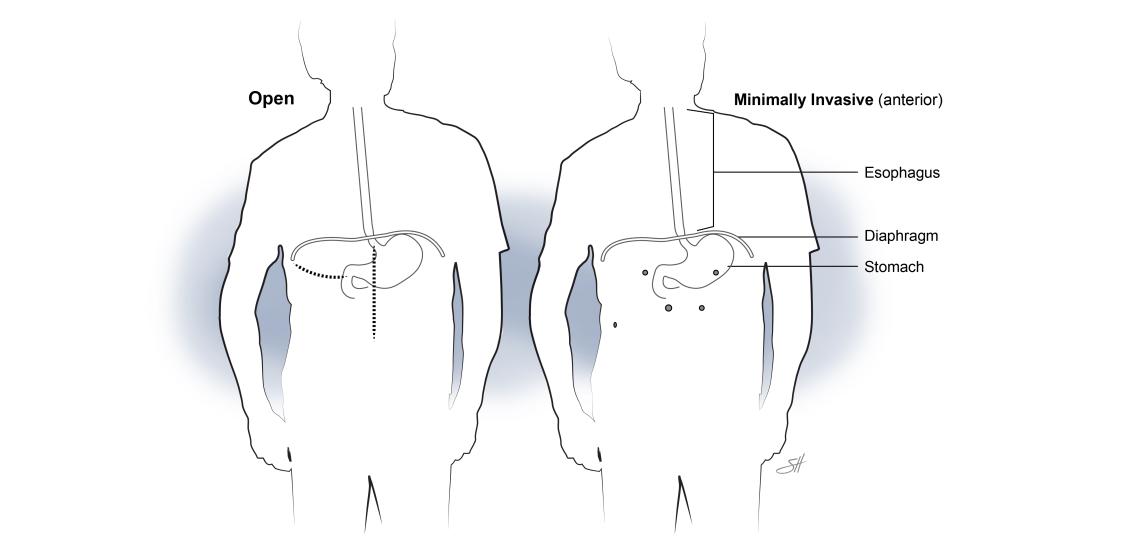An esophagectomy is a surgical procedure to remove the part of the esophagus that has a tumor and part of the stomach. Usually, the esophagus is replaced by building a new one out of the stomach. Occasionally, the colon or small intestine is used. Even if your tumor is only in the lower esophagus, your surgeon will remove at least half of the esophagus due to problems with reflux and swallowing caused when less is removed.
Types of Esophagectomy
There are various approaches for conducting an esophagectomy (described below). Your surgical team will work with you to select the best operation for your specific tumor location.
Minimally Invasive Esophagectomy
A minimally invasive esophagectomy involves no large incisions. Instead, surgery is performed through smaller incisions.
- Laparoscopy: long instruments are used through small incisions on the abdomen to perform the portion of the surgery involving the stomach and/or intestines. The abdomen is inflated with carbon dioxide to provide room for the procedure.
- Thorascopy: long instruments are used through small incisions on the chest to perform the portion of the surgery on the esophagus. No rib spreading is necessary.
Thoracic surgeons at Baylor Medicine are experts in minimally invasive techniques and whenever feasible, use a minimally invasive approach. This approach has proven benefits over the traditional open esophagectomy without compromising any quality. These benefits include lower complication rates, less pain and better long-term quality of life.
Ivor Lewis versus Three-Hole
The surgeons at Baylor Medicine typically choose from these two methods of esophagectomy:
- Ivor Lewis involves surgery in the abdomen and chest. This approach is often preferred when the tumor is in the lower part of the esophagus/top of the stomach.
- Three Hole (also known as modified McKeown) involves surgery in the abdomen, chest and left side of neck (three incision sites, or “holes”). This approach allows for a more extensive view and access to the surgical site, enabling precise removal of the affected tissue and reconstruction.








 Credit
Credit

